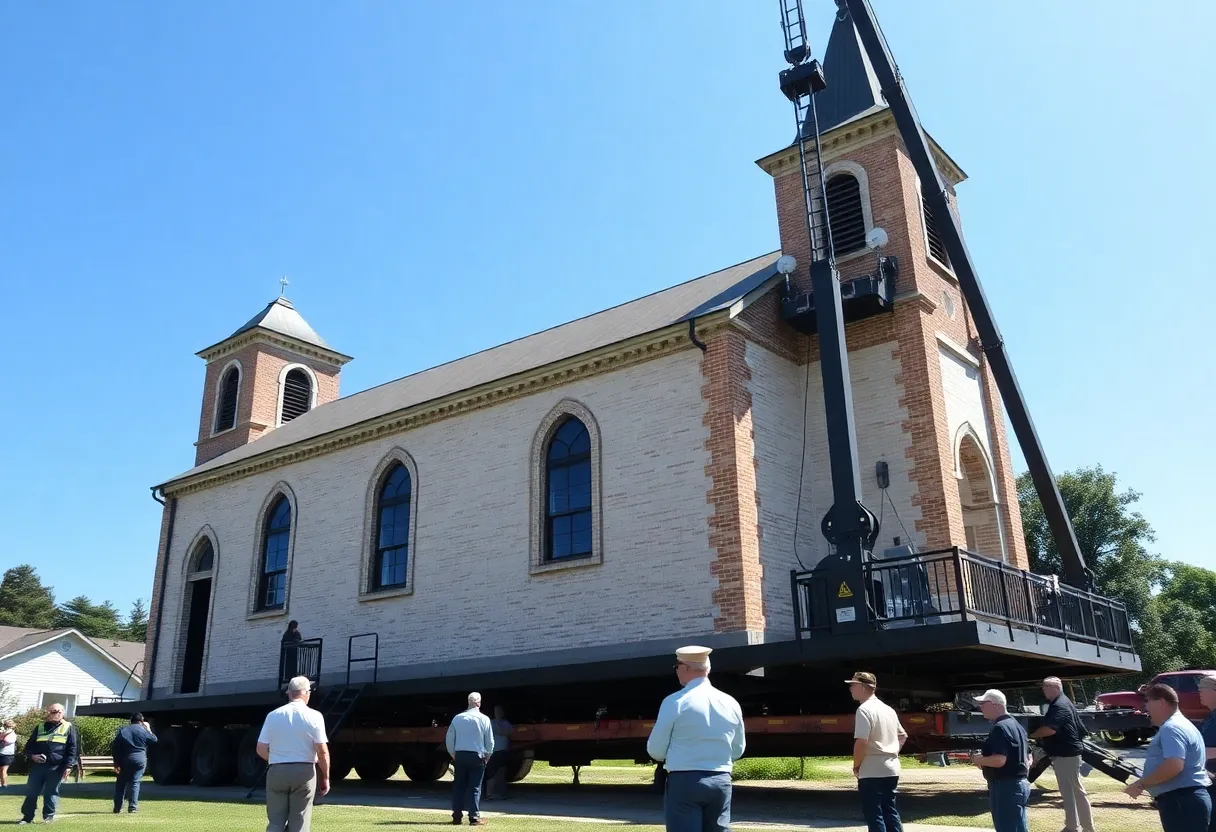News Summary
The Zion Korean Church in Greenfield is being relocated rather than demolished, ensuring the preservation of its rich historical legacy.
Historic Zion Korean Church Set to be Relocated to Preserve Heritage
The former Zion Korean Church, situated at 463 Main St. in Greenfield adjacent to Franklin County’s YMCA, is gearing up for a monumental move instead of facing demolition. With a rich history that dates back to the 1840s, the church has long been a part of the community and its preservation has now become a priority for local officials and historians alike.
Asbestos Removal Paves the Way for Relocation
Before any relocation efforts can commence, hazardous materials crews have successfully conducted asbestos removal from the building. This vital step ensures that the move will not present a health hazard to the community. The church’s structural integrity has been preserved through careful planning and execution, allowing for an exciting new chapter in its long history.
Greenfield YMCA and Philip Stevens Join Forces
To facilitate the relocation, a partnership has been formed between Franklin County’s YMCA and Philip Stevens, a farm owner from Barre, who is experienced in moving historic buildings. Together, they struck an agreement that will see the church carefully dismantled and transported, thus avoiding the fate of demolition that was initially on the table. The YMCA had been considering options to either demolish or relocate the church to make room for an expanded playground and a third preschool classroom, but the community’s concerns changed the course of action.
A Historical Gem Under Threat
On January 2, the Franklin County Historical Commission designated the church as a “preferably preserved significant building,” invoking a six-month demolition delay. This designation provides a crucial window for various stakeholders to explore preservation methods and articulate the building’s historical importance. The church, originally built as Coldbrook Springs Baptist Church in Barre in the 1840s, is listed on the National Register of Historic Places as part of the East Main/High Street Historic District. Its relocation is not just about moving a building; it is a chance to keep alive a piece of history that connects to famous abolitionist figures like William Lloyd Garrison.
The Heart of the Community
Over the years, the church has served various functions in the community. Originally purchased and relocated to Greenfield in 1936 by the Greenfield Christian Scientist congregation, the church has been a venue for community gatherings and historical discussions, including abolitionist events. The architectural move is particularly poignant since the church had to be relocated once before due to the construction of the Quabbin Reservoir as part of the Ware River Diversion Project.
Commitment to Preservation
As the YMCA prepares to disconnect the church’s utilities, contractors are expected to begin dismantling by late March or early April. There is a firm stipulation that it must be rebuilt according to its original design—an agreement that reflects a community commitment to honoring the church’s historical integrity. Community leaders are optimistic about the move and aim to ensure the church’s spirit is retained even in its new location.
Community Involvement and Support
The YMCA is additionally committed to contributing part of its fundraising efforts towards the church’s relocation costs. Comments from members of the Historical Commission highlight how rare it is for a building to move back to its original municipality, with some considering it a “minor miracle.” The enthusiasm surrounding the church’s relocation underscores its historical and cultural significance, creating a collaborative atmosphere among community members.
A Focus on Future Plans
Discussions regarding the church’s future have sparked interest and excitement within the community. Stakeholders remain dedicated to ensuring it is preserved while also exploring creative ways to commemorate its past. If faced with the potential of demolition, there was an intention to find artistic ways to memorialize the church, although the focus now remains firmly on preservation. The Historical Commission’s involvement has catalyzed efforts to safeguard the church’s legacy, ensuring it continues to serve as a source of historical pride for the community.
The story of the former Zion Korean Church and its coming relocation exemplifies community collaboration, a dedication to history, and a strong desire to preserve the past for future generations.
Deeper Dive: News & Info About This Topic
HERE Resources
Grandfather’s Battle with Mesothelioma
Denver Contractor Sentenced for Asbestos Violations
California Wildfires Ignite Alarm Over Asbestos Exposure
Asbestos Scare at Abingdon Elementary School Prompts Concerns and Investigations
The Ongoing Asbestos Crisis at University of Charlotte’s Sanford Hall
California Couple Takes Legal Stand Against Asbestos Companies
Flint Cooper’s Legal Team Grows to Combat Asbestos Epidemic
Alerts at Lampeter-Strasburg School Board Meeting: Asbestos Discovery Raises Concerns
Asbestos: The Toxic Carcinogen Strikes Again as U.S. Implements Phased Ban
U-Haul Faces Hefty Fine Over Asbestos Exposure During Renovation
Additional Resources
- The Recorder: Asbestos Removal Marks Latest Step in Relocation of Former Zion Korean Church
- Wikipedia: Zion Korean Church
- The Recorder: YMCA Signs Demolition Contract for Historic Greenfield Church
- Google Search: Zion Korean Church
- The Recorder: Greenfield Historical Commission Seeks Demolition Delay for Zion Korean Church
- Google Scholar: Historic Preservation
- The Recorder: Historical Commission to Hold Demo Delay Hearing for the Zion Korean Church
- Encyclopedia Britannica: Historic Churches



















